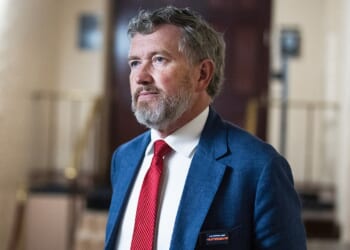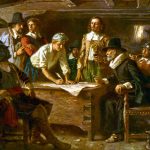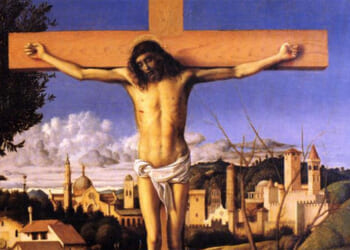In 2023, the charismatic leader of the Wagner Group launched a coup against the Kremlin.
The Kremlin is giving main battle tanks to the Rosgvardiya, the Russian National Guard, as a way to protect Russian president Vladimir Putin from domestic threats.
Putin’s Praetorian Guard
According to Viktor Zolotov, the chief of the Rosgvardiya, the organization has established tank units as part of a wider militarization process. Zolotov is Putin’s former bodyguard.
Unlike the Russian military, which follows an established chain of command and reports to the Russian Ministry of Defense, which then reports to the Kremlin, Rosgvardiya reports directly to the Russian leader.
In its latest intelligence estimate on the Ukrainian conflict, the British Ministry of Defence highlighted the growing strength of Putin’s personal force.
“Its primary intended purpose is to provide domestic security to ensure the continuity of the Russian regime. Rosgvardiya units have deployed to Ukraine, playing an important role in rear-area security operations. Some units have also participated in frontline combat, despite being ill-suited for the intense fighting,” the British Ministry of Defence assessed.
Rosgvardiya units were part of Russia’s initial invasion force into Ukraine. However, they were not prepared nor equipped for the rigors of conventional conflict against a regular military and suffered heavy casualties as a result.
A Failed Mutiny
The Kremlin’s decision to enhance the combat capabilities of the Rosgvardia with heavy weapons, which was codified into law by Putin in August 2023, came after the abortive Wagner Group mutiny in June 2023.
During that summer, the Ukrainian military had launched a major counteroffensive in southern Ukraine. Although the Russian forces were putting up a stiff resistance and conceding little ground, morale among the troops was low. In the preceding months, the Russians were taking heavy casualties for limited gains. Frontline units often exhibited mutinous tendencies, openly questioning the Russian High Command. The Wagner Group paramilitary group—manned with mercenaries and convicts—enjoyed more success on the battlefield. And that success likely fueled the ambition of its leader, Yevgeny Prigozhin, to march into Moscow and topple Putin.
In June, the charismatic and brutal leader of Wagner Group decided to take things into his own hands, launching a coup against the Kremlin. After some rapid successes, his forces were stopped on their way to Moscow. Prigozhin was first exiled and then assassinated.
“Despite Zolotov’s claim that his force performed ‘excellently’ during the mutiny, there is no evidence that Rosgvardiya carried out any effective action against Wagner; exactly the sort of internal security threat it was designed to repress,” the British Ministry of Defence added in its intelligence assessment.
To be sure, the Wagner Group mutineers possessed heavy weaponry, including main battle tanks and artillery, whereas the Rosgvardiya units that went up against them were ill-equipped to deal with a combat-hardened and well-equipped force. The decision to equip his National Guard with heavier weaponry is very likely a direct result of its inability to stop the paramilitary mutineers that came dangerously close to Moscow.
“The creation of tank units is a marked militarisation of Rosgvardiya, improving its capacity to deal with military and paramilitary threats to Putin’s regime security. It also almost certainly demonstrates the Kremlin’s continued trust in Rosgvardiya’s loyalty,” the British Ministry of Defence concluded in its latest intelligence assessment.
About the Author: Stavros Atlamazoglou
Stavros Atlamazoglou is a seasoned defense journalist specializing in special operations and a Hellenic Army veteran (national service with the 575th Marine Battalion and Army HQ). He holds a BA from the Johns Hopkins University and an MA from the Johns Hopkins’ School of Advanced International Studies (SAIS). His work has been featured in Business Insider, Sandboxx, and SOFREP.
Image: vaalaa / Shutterstock.com


















